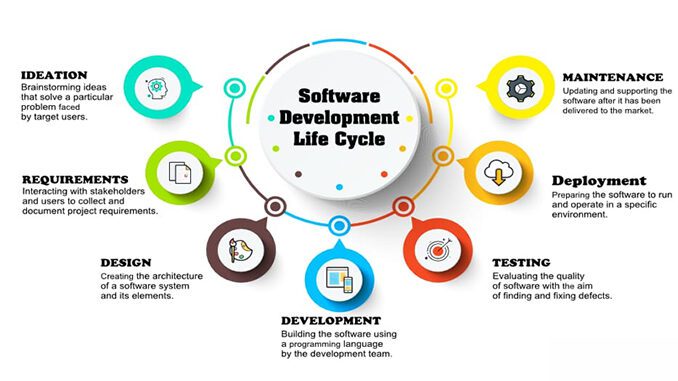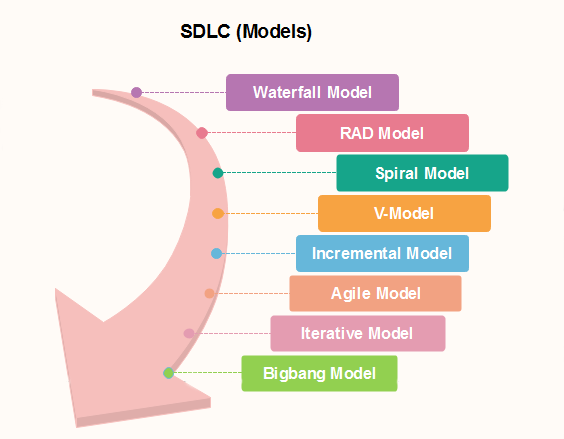
Sri Lanka Schools ICT – OL ICT SDLC -Grade 11 Lesson 2 is System Development Life Cycle (SDLC). After studying this chapter, you will be able to understand the following:
- What is a system?
- Interactions among components in a system
- Manual information systems vs computer-based information systems
- The ability to determine why a system is necessary
- Steps in the development process of an information system
- The use of life cycle models to develop information systems
- Computer-Based Information Systems
You can get better practical knowledge by watching the given videos related to the topics mentioned in the syllabus of this lesson OL ICT Multimedia. By clicking on the relevant categories, you can see the description of the lesson related to the topic
? Learning Video Option 1 – Sinhala Medium – Play List Included 6 Videos with Question discussion
-

02 වන පාඩම | තොරතුරු පද්ධති සංවර්ධන ක්රියාවලිය - 01 වන කොටස | 11 වන ශ්රේණිය | ICT Grade 11
-

02 වන පාඩම | තොරතුරු පද්ධති සංවර්ධන ක්රියාවලිය - 02 වන කොටස | 11 වන ශ්රේණිය | ICT Grade 11
-

02 වන පාඩම | තොරතුරු පද්ධති සංවර්ධන ක්රියාවලිය - 03 වන කොටස | 11 වන ශ්රේණිය | ICT Grade 11
-

O/L ICT 2021 Answers | OL ICT 2021 Part 2 Answers | Information Systems Question | ICT 06 ප්රශ්ණය
-

'OL ICT Sinhala| past paper discussion-SDLC(2016 සිට 2019)' #O/L ICT Sinhala #ICT Sinhala Academy
Given below is a series of notes (System Development Life Cycle) prepared in relation to your syllabus.
For an enlarged view of the Note ? Click Here
Related resources and links to this lesson
Text Book Lesson Note Download Questions MCq
A system that converts data into Information using a computer is known as a computer-based information system. Consider a computer-based library information system. Some of the benefits to a librarian in using a computer-based library system are as follows.
Ability to detect whether a particular book is available in the library and if available, the location of the book.
Ability to use a bar code to maintain issues and receipts
Ability to automatically calculate fines for late returns
Ability to search for books efficiently 56 For free distribution
Ability to maintain records of those who have borrowed books
Possibility to list those who have failed to return books on due dates
Establishes an online system for remote reservations and searching for books Ability to provide e-books to members A computer-based
library system can be networked with the main office of the school providing a facility to confirm the return of library books by the
students when issuing leaving certificates.
OL ICT SDLC Models
The Software Development Life Cycle (SDLC) refers to a structured approach followed by software development teams to plan, design, build, test, deploy, and maintain software systems. There are several SDLC models, each with its own advantages and disadvantages. Here are some commonly used SDLC models:
Waterfall Model: The Waterfall model is a linear and sequential SDLC model. It progresses through distinct phases such as requirements gathering, design, implementation, testing, deployment, and maintenance. Each phase must be completed before moving on to the next, and it is difficult to accommodate changes once a phase is completed.
Agile Model: The Agile model emphasizes iterative and incremental development. It involves dividing the project into small iterations or sprints, where each iteration delivers a working software increment. Agile methods, such as Scrum and Kanban, promote flexibility, collaboration, and continuous improvement.

Spiral Model: The Spiral model combines elements of the Waterfall model and iterative development. It incorporates risk analysis and prototyping in each iteration, allowing for feedback and adjustments throughout the development process. The Spiral model is suitable for large and complex projects.
V-Model: The V-Model is an extension of the Waterfall model that emphasizes testing. It includes corresponding testing phases for each development phase, forming a V-shaped structure. Testing is integrated early in the process, reducing the likelihood of defects.
Iterative Model: The Iterative model involves repeating cycles of the development process. It allows for incremental development and feedback incorporation in each iteration. The feedback loop enables continuous improvement and adjustment based on user or stakeholder input.
Rapid Application Development (RAD): The RAD model focuses on quickly developing software prototypes. It involves user feedback and participation throughout the development process, leading to faster delivery of working software.
DevOps: DevOps is not a specific SDLC model but rather a cultural and operational approach that promotes collaboration between development and operations teams. It emphasizes automation, continuous integration, continuous delivery, and continuous deployment to enhance software development and delivery processes.
It’s important to note that different projects may require different SDLC models based on their specific requirements, scope, and constraints. Organizations often choose the most suitable model or adapt existing models to fit their needs.
external resources


Leave a Reply